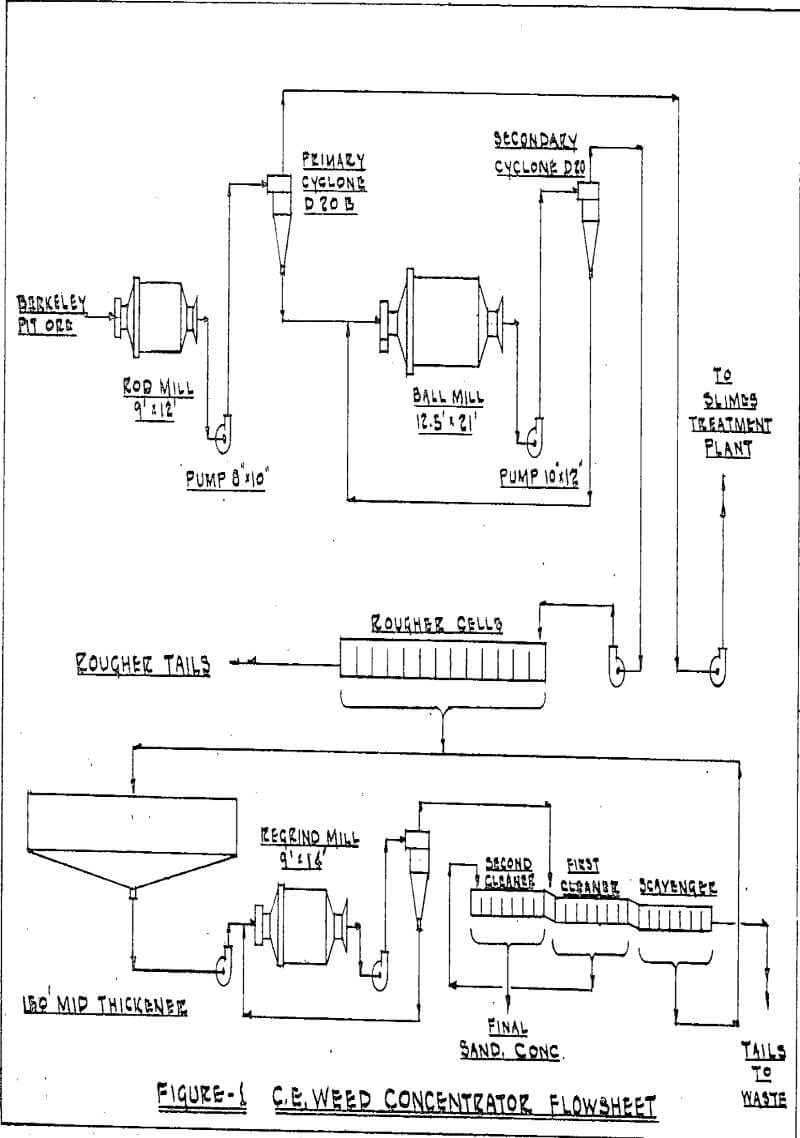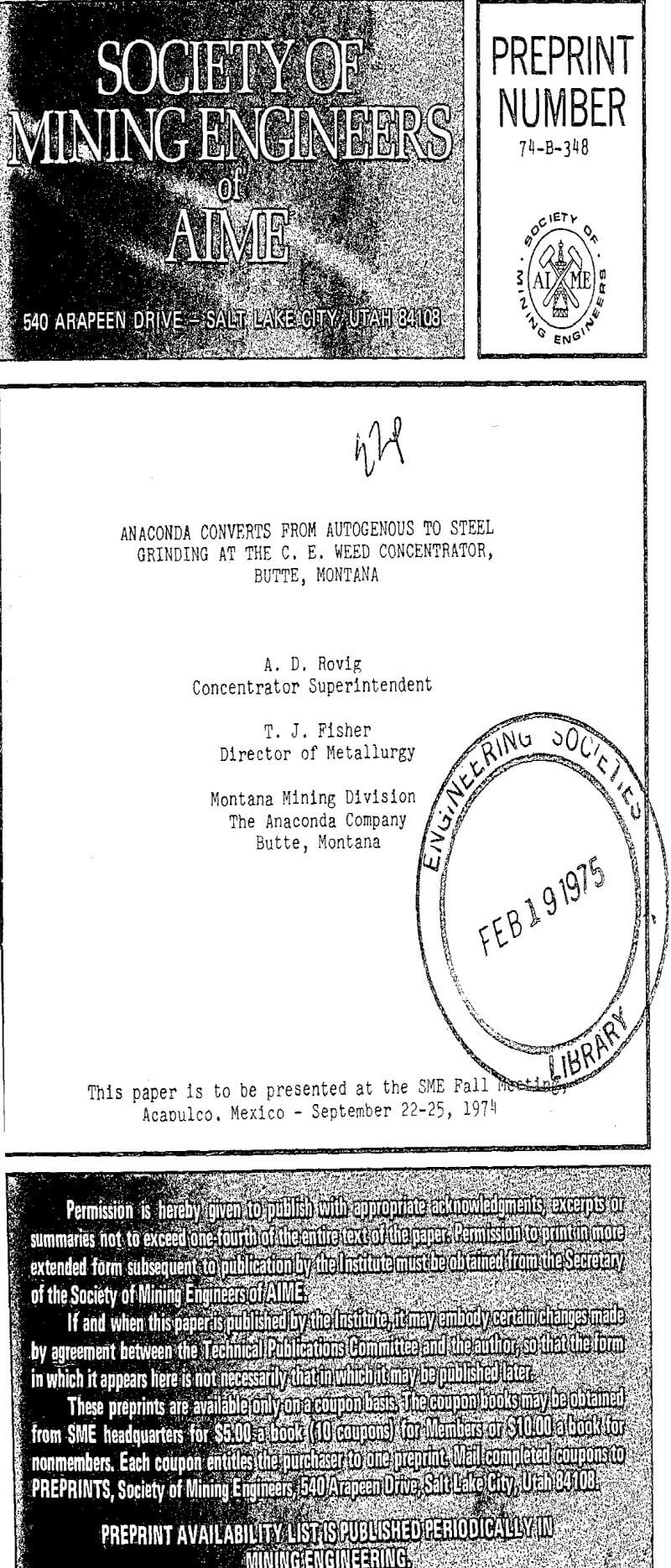Table of Contents
Metallurgical evaluation of autogenous grinding of Anaconda’s Berkeley Pit ores indicated that tonnage throughput increases, at a finer flotation feed size, were possible by converting autogenous mills to steel ball mills. In addition, initial test work showed that the improved grind resulted in slight recovery gains in subsequent flotation processing.
Operation of the Autogenous Mills
The early projections of high pebble consumption proved to be very true. More importantly, the variability of pebble competency became a factor to be reckoned with in a number of ways. Competency of pebbles resulted in a cause-effect relationship in a sequential manner. Namely, as ore softness varied, a resultant variation in the rate of pebble consumption developed; and, thus, a fluctuation in volume rate of flow of pulp from the grinding circuit to the flotation sections. Obviously, this surging flow condition at pump stations and within the flotation sections resulted in adverse metallurgical flotation response as well as increased maintenance and cleanup requirements.
Pebble consumption varied in ranges of 10% to 30% of the total ore treated in the plant on a daily basis. In addition, it was found that an 8 to 10% ball change in each pebble mill was necessary to assure adequate mill throughput capacity and to acquire grinding efficiency.
Steel Ball Grinding Evaluation
The sequence of investigative steps which eventually led to the conversion from autogenous to ball grinding are presented in the section immediately below:
Step 1 — Evaluate the effect of reducing rod mill feed size from 1½” to 1″. Convert two pebble mills to ball mills.
Step 2 — Test full division conversion to ball mills. Evaluation of ball size.
Step 3 — Determine maximum tonnage treatment capability with ball mills.
Step 4 — Comparison of overflow and grate discharge ball mills. Study of ball size.
Step 5 — Final testing of full division of ball mills against a pebble mill division.
This first testing demonstrated that the existing three standard Symons-type crushers could be closed to crush adequate tonnages at one inch (originally 1-½- inch). Also, the installation of 1-inch fine screens in the crusher instead of 1½-inch screens contributed to the flow of finer feed to the rod mill circuits.
This very early test work showed an immediate gain in tonnage throughput of the 1 rod mill followed by the two ball mills when compared to the 2 rod mill followed by two pebble mills. Initially, it was found that an average of 314 tons/hour could be treated in the 1 rod mill; whereas, the 2 rod mill treated 278 tons/hour. Additional testing showed that rod mill feed rates could be taken as high as 475 tons/hour.
Screen analyses of flotation feed products showed that the 3 ball mill with one-inch balls produced feed with 12.6% on 65 mesh; whereas, the 4 mill with two-inch balls produced a feed with 23.1% on 65 mesh. The 7 mill, completely charged with pebbles, produced a flotation feed of 25.0% on 65M.
Full-Plant Production
Berkeley Pit ores are variable as to hardness, grade, degree of oxidation, content of soluble salts, content of decomposed wood from previous underground mining and effects of alteration mineralogy. In addition to these variables plus the changes made in the Weed Concentrator crushing and grinding circuits, it should also be noted that a new Traylor 60″ x 89″ gyratory crusher was placed in service as the primary crushing unit for run of mine ore. This unit replaced an older and smaller jaw crusher. Obviously then, an increase in production can be credited in part, to the reduction in primary crusher product size of 9″ to 6″.
Ball milling at the Weed Concentrator is now well established; however, the study really seems to have just begun in that many items of interest are continually being evaluated. These items are mill lining designs and materials, optimum mill speeds and power consumption, ball type and size, mill load and control, size distribution and optimization of sizing by improving the classifying system, and the effects of corrosion on ball consumption.


